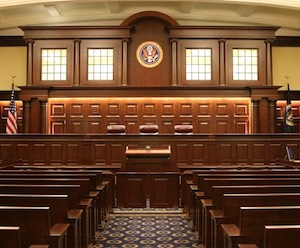 Hologic, Inc. v. Smith & Nephew, Inc., No. 2017-1389, 2018 (Fed. Cir. Mar. 14, 2018 (Before Newman, Wallach, and Stoll, J.) (Opinion for the court, Stoll, J.)
Hologic, Inc. v. Smith & Nephew, Inc., No. 2017-1389, 2018 (Fed. Cir. Mar. 14, 2018 (Before Newman, Wallach, and Stoll, J.) (Opinion for the court, Stoll, J.)
Appellant Hologic, Inc. (“Hologic”) initiated an inter partes reexamination of the patent-in-suit, owned by Smith & Nephew and Covidien (together, “S&N”). The USPTO Patent Trial and Appeal Board (“Board”) found that S&N’s earlier-filed PCT application had sufficient written description to make it a priority document, instead of an intervening reference to prove obviousness. The Court affirmed.
The patent-in-suit relates to an endoscope and method to remove uterine tissue. The claims at issue recite a method of using an endoscope with a “permanently affixed” “light guide” in one of two channels.
Hologic requested inter partes reexamination of the patent, which the USPTO granted. The Examiner found that S&N’s patent could not claim priority to the earlier-filed PCT application because the PCT did not provide adequate written description for the claims.
The issue was whether the PCT, which disclosed a “connection to fibre optics bundle which provides for lighting” was a sufficient written description to support the “light guide” “permanently affixed” in the “first channel” of the patented claims. The Board reversed the Examiner and concluded that the earlier application had sufficient written description to qualify as a priority document.
Whether and earlier-filed application possesses sufficient written description to qualify as a priority document, or instead is prior art, is a question of fact, which the Federal Circuit reviews for substantial evidence. See 35 U.S.C. § 112, 35 U.S.C. § 120; Yeda Research & Dev. Co. v. Abbott GmbH & Co. KG, 837 F.3d 1341, 1344-45 (Fed. Cir. 2016). Here, the field was a “predictable art” and required less detail to satisfy the written description requirement. Additionally, “substantial evidence” involves “an objective inquiry into the four corners of the specification from the perspective of a person of ordinary skill in the art …, [which] must describe an invention understandable to the skilled artisan and show that the inventor actually invented the invention claimed.” Ariad Pharm., Inc. v Eli Lilly & Co., 598 F.3d 1336, 1351 (Fed. Cir. 2010) (en banc).
Hologic argued that substantial evidence does not support the Board’s conclusion that the PCT inventor had possession of (1) a “light guide;” and (2) a light guide permanently affixed in the “first channel.” One of the figures in the PCT was said to show that the inventor was not in possession of the invention at the relevant time. Relying upon the disclosed “fibre optics bundle,” which the parties agreed is a species of light guide, and that light guides are a “well-known,” the Court concluded that substantial evidence supported the Board’s findings. Further, the Court rebutted Hologic’s third argument by stating that “[t]he written description does not require that every claimed element be illustrated in the figures, particularly in the predictable arts.”
Accordingly, the Federal Circuit affirmed the Board’s finding that the PCT provided written description support for the patent-at-issue, which was entitled to claim priority to the PCT disclosure.
Take Away
The disclosure of a species, here a “fibre optics bundle,” was sufficient support for a priority claim by a later-filed patent application utilizing genus claims, here a “light guide,” because the patent-in-suit was in a predictable art field and the genus claims covered well-known limitations.
[Troutman-Ad]
[Troutman-About]

![[IPWatchdog Logo]](https://ipwatchdog.com/wp-content/themes/IPWatchdog%20-%202023/assets/images/temp/logo-small@2x.png)


![[Advertisement]](https://ipwatchdog.com/wp-content/uploads/2024/04/Patent-Litigation-Masters-2024-sidebar-early-bird-ends-Apr-21-last-chance-700x500-1.jpg)

![[Advertisement]](https://ipwatchdog.com/wp-content/uploads/2021/12/WEBINAR-336-x-280-px.png)
![[Advertisement]](https://ipwatchdog.com/wp-content/uploads/2021/12/2021-Patent-Practice-on-Demand-recorded-Feb-2021-336-x-280.jpg)
![[Advertisement]](https://ipwatchdog.com/wp-content/uploads/2021/12/Ad-4-The-Invent-Patent-System™.png)







Join the Discussion
No comments yet.